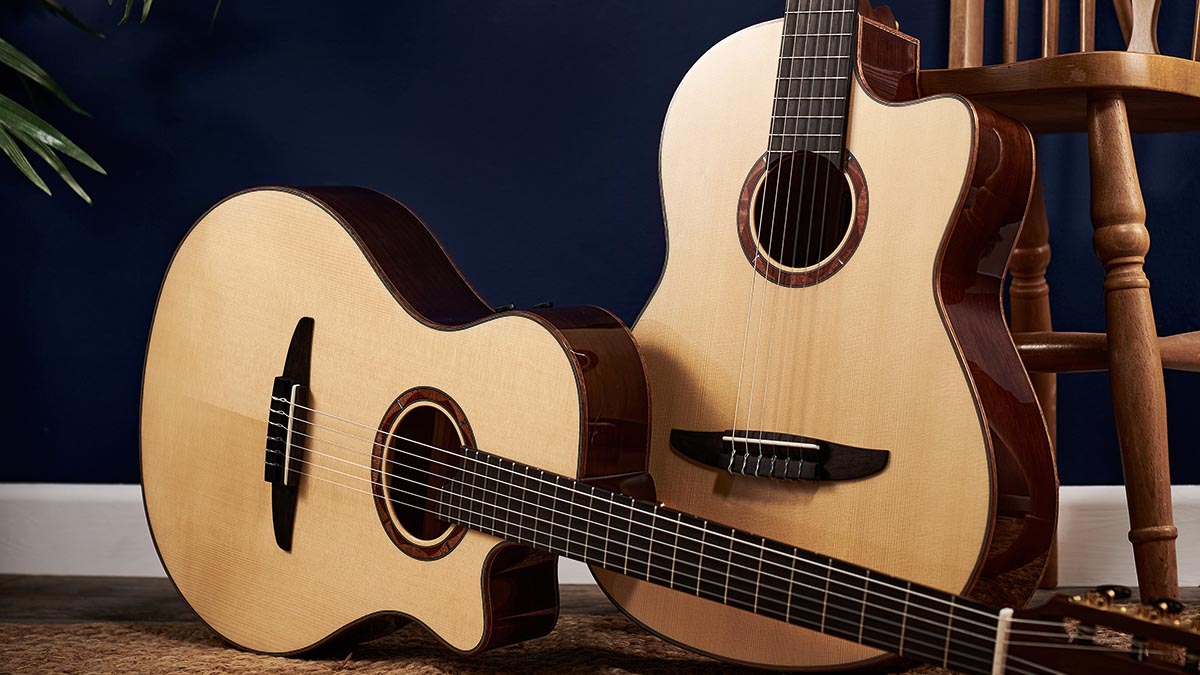Guitar World Verdict
These new NXes throw down another gauntlet: if you’re in the market for an electro nylon-string, this is the place to start your search.
Pros
- +
Great contemporary design, superb build.
- +
Easy-to-use, efficient preamp/pickup system.
- +
NTX5's ‘crossover’ style has more general appeal.
- +
NTX5 is hard to fault on any level.
Cons
- -
NCX5 is a little thick sounding – some might need more snap.
- -
NTX3 has similar specs and is considerably less expensive.
You can trust Guitar World
You sometimes hear an adage about old Gibson Les Pauls: “no two sound the same”. This can also be applied to the steel-string acoustic, and perhaps more so to the nylon-string classical guitar.
It’s one thing making a great-sounding acoustic guitar, but a whole different world when it comes to amplifying it to an audience. Creating a good sound in both environments, then, is challenging. But that’s exactly the design brief of Yamaha’s decade-old NX guitars.
“With resolution of these problems firmly in mind, we set out to create a guitar that would satisfy in terms of design, playability and sound quality,” said Yamaha designer Kenta Hori.
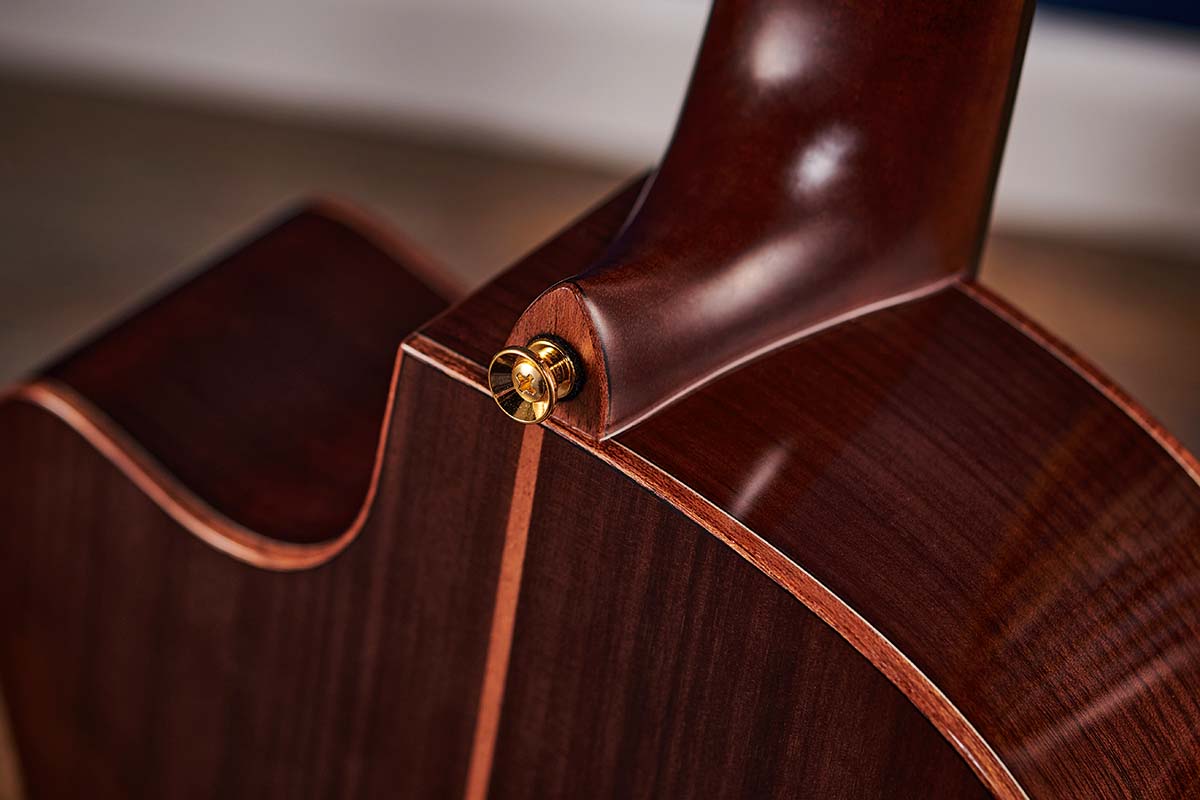
But we’re not talking one guitar. If the above wasn’t enough to chew over, Yamaha created the NCX to appeal to a more classically trained (or aimed) player, while the NTX is for someone more used to a steel-string, a ‘crossover’ player.
The new models are closely based on those original designs with their two distinct styles. The NCX is a 12-frets-to-the-body ‘classical’-based nylon-string with a broad nut width of 52mm, a flat fingerboard and wider string spacing at the tie-block bridge.
In contrast, that more ‘crossover’-style NTX is a 14-fret that’s based on Yamaha’s APX body shape, with a narrower nut width of 48mm, a lightly cambered (600mm) fingerboard, narrower string spacing at the bridge, and slightly thinner than the NCX in depth. Both are cutaway nylon-string electros with similar aesthetic style, but the differences for the player are quite marked.
So, what’s changed? Firstly, the model numbers move from a three- or four-digit suffix to a simple 1, 3 and 5 designation. The 1 and 3 levels are completely made in Yamaha’s Chinese mega-factory.
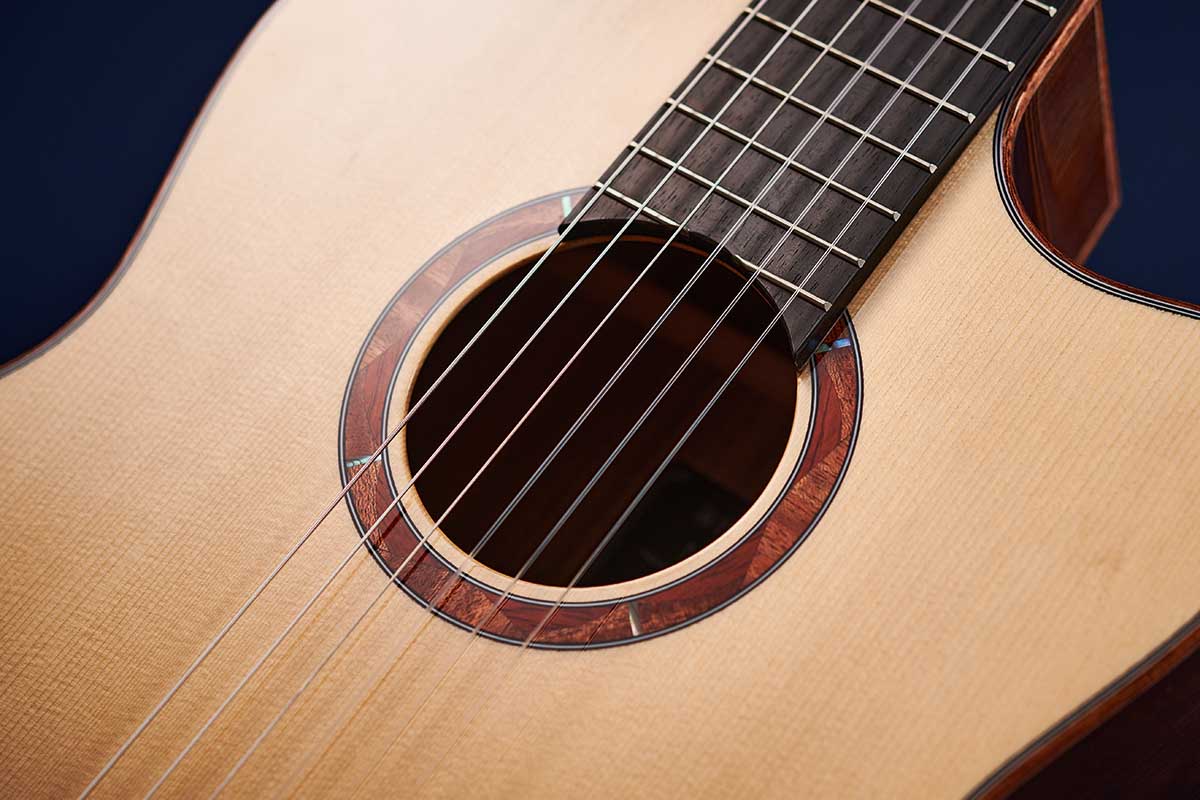
The 5 models that we have here are made in the same factory but are finished off in Japan. Both have exactly the same specification with the exception of the tops: European spruce on the 5s, and Sitka or red cedar on the 3s; the nut/saddle material drops from bone to synthetic (urea); and the spec of the tuners is slightly lower.
Our NTX5 also has 24 frets (the upper two are partial) as opposed to the 22 of the NTX3 (and NTX1), while the NCX stays with 19 frets on all models.
They certainly share more than not. The back/sides wood is walnut, the necks are African mahogany, the fingerboards are ebony, even the binding (mahogany with fine black/white purfling) and soundhole decoration (mahogany and paduk with abalone detailing) are the same.
You also get the same ‘reinforced carrying bag’ with both levels. If that sounds like a Bag For Life you might purchase at the supermarket, think again. It’s Yamaha and it’s a superbly rugged but light ‘soft’ case.
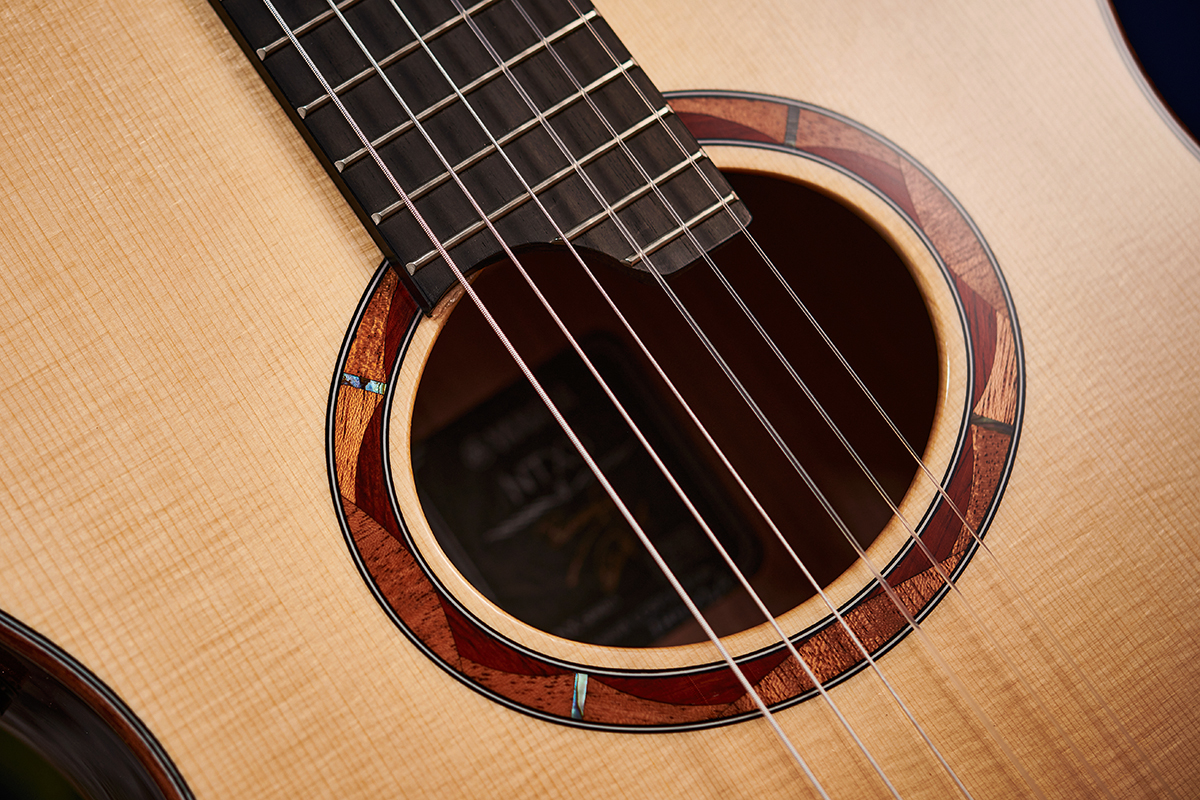
Of course, the new designs benefit from a decade’s worth of player feedback and advancing technology. In the former regard, rather oddly, there’s no mention of Rodrigo y Gabriela whose signatures grace the labels of the NTX5 and NCX5 respectively, reflecting their use of the original NX guitars – albeit heavily customised – and their involvement in these new designs.
Rodrigo y Gabriela have also probably done more than any other artists to put the amplified nylon-string centre stage in the past decade.
Technology also moves on and Yamaha is hanging this new range around a new pickup system, the nylon-string version of the Atmosfeel system we originally saw on the Red Label FGs a couple of years back.
It’s pretty much the biggest area of departure from the original designs with a move to a trio of more streamlined and low-profile rotary controls mounted on the bass-side shoulder above the waist and a trio of transducers: an under-saddle piezo, a new proprietary top sensor, and a mini microphone mounted on the internal PCB.
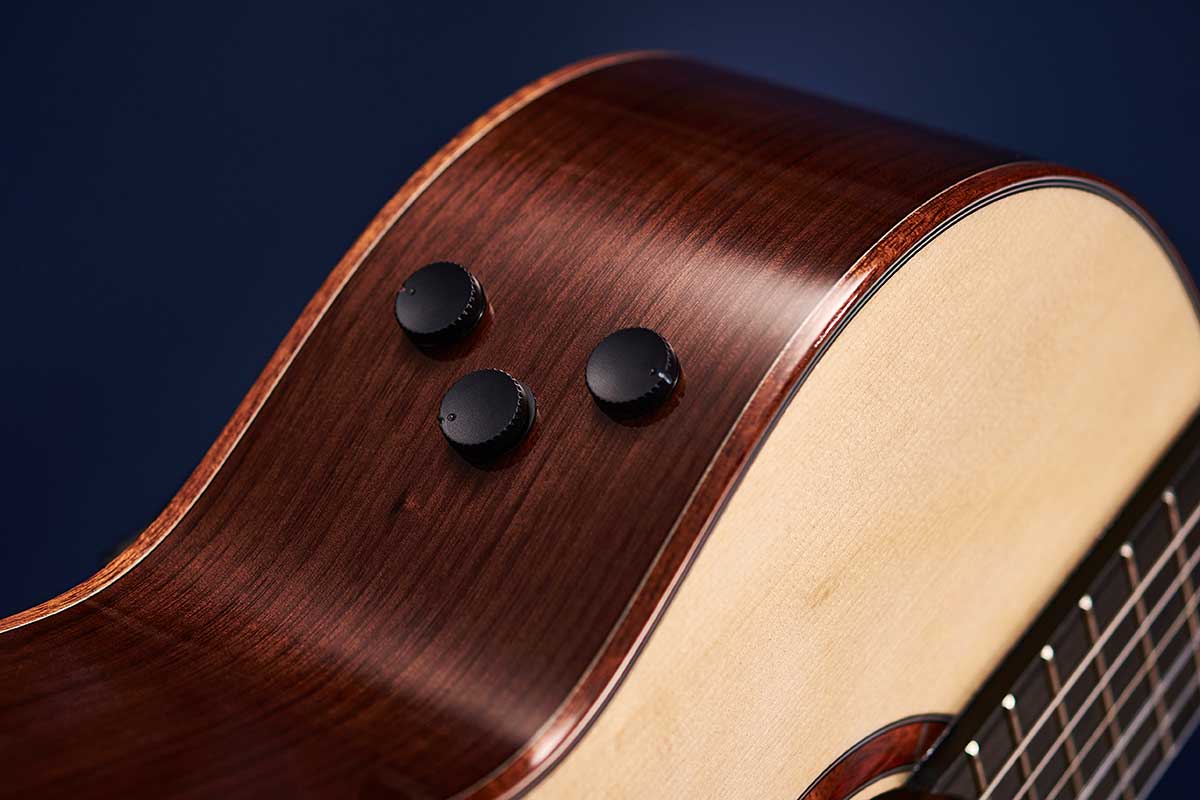
NCX vs NTX
Irrespective of price, Yamaha just doesn’t allow anything remotely shoddy to bear its name – and you’re not going to find a defect here. Absolutely everything is considered, from the concept to the new battery holder. To say both guitars are well turned out is an understatement.
That said, the new construction on our NCX5 does lead to a slightly – but noticeable – heavier guitar compared with our reference original NCX2000R: 1.99kg (4.39lb) as opposed to 1.90kg (4.18lb). Our NTX5 is lighter at 1.86kg (4.09lb), while our other reference, a NCX900FM from the previous range, weighs even less at 1.58kg (3.48lb).
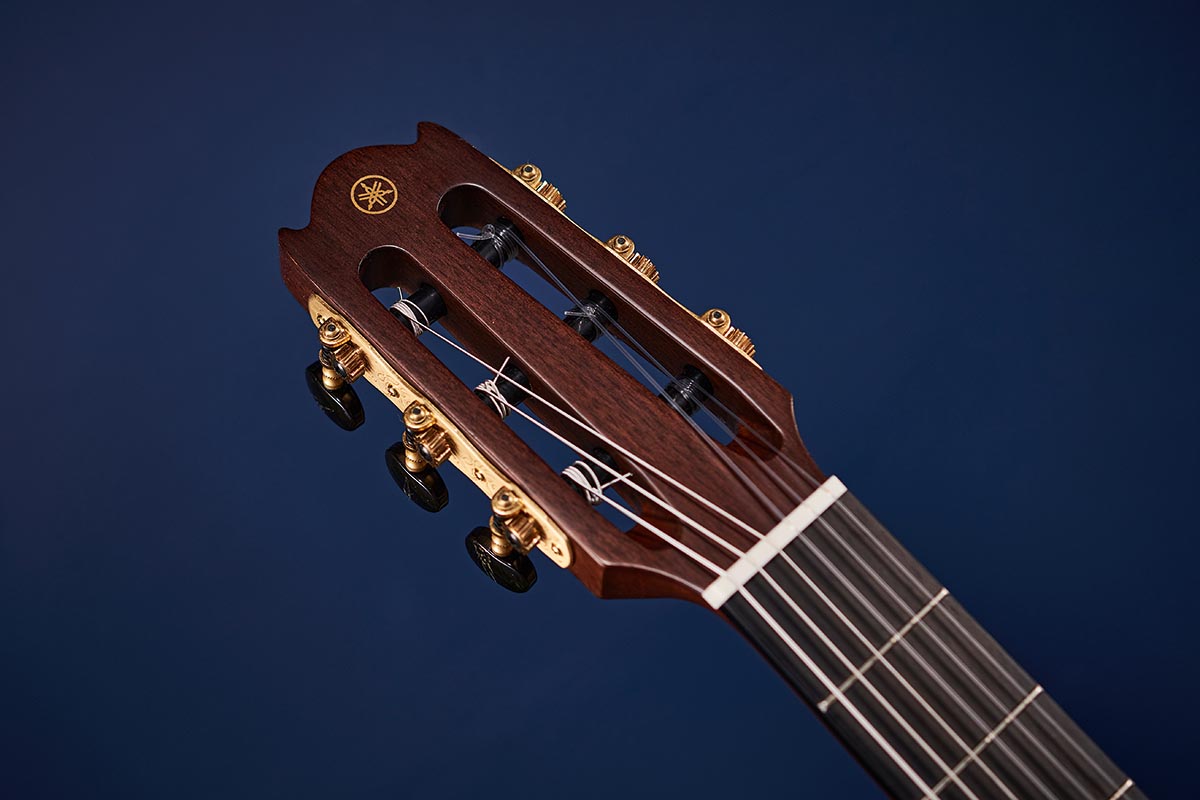
The generally heavier build of the original NXes reflects the stage-aimed concept, and if you never plan to play out, neither of these designs would be our first choice for a home or studio nylon-string.
Frankly, they’re road-hogs – and that’s the point. But aside from the aforementioned differences, the design notably places the tie-block bridges in different places, resulting in a fundamental difference in feel and sound, along with an approximate 10mm difference in body depth.
Both use a similar steel-string-like dovetail neck join, and while both also have a pretty traditional and light fan bracing, the main cross bracings to both back and front seem a little heavier here than you might expect. Note the subtle additional rounding to the binding in the forearm area of the NCX, too, apparently suggested by Gabriela.
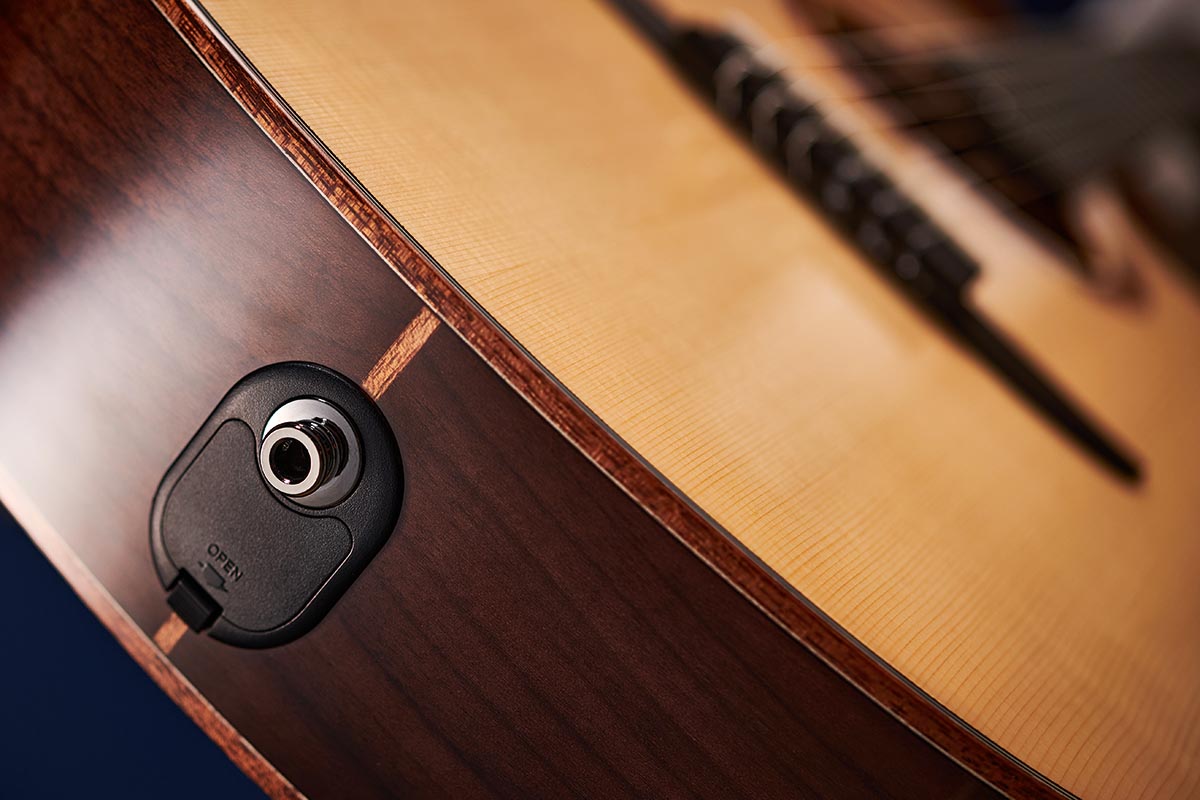
Feel & Sounds
A few hours’ playing reveals plenty more differences, not only between the previous guitars but the different styles.
Not surprisingly, it’s the NCX that comes across as the bigger piece. Yet although the nut width is just over 52mm, the string spacing at the nut is 41mm and 58.5mm at the bridge. Meanwhile, the neck has what can best be described as a D-shaped profile with pretty full shoulders and a lightly flattened back.
It measures 22mm at the 1st fret and 24.5mm by the 9th, before the neck moves into the classical-style boat-bow heel. Our old NCX200R has a very similar profile, but doesn’t feel as big, measuring 21.3mm at the 1st fret and 23.7mm by the 9th.
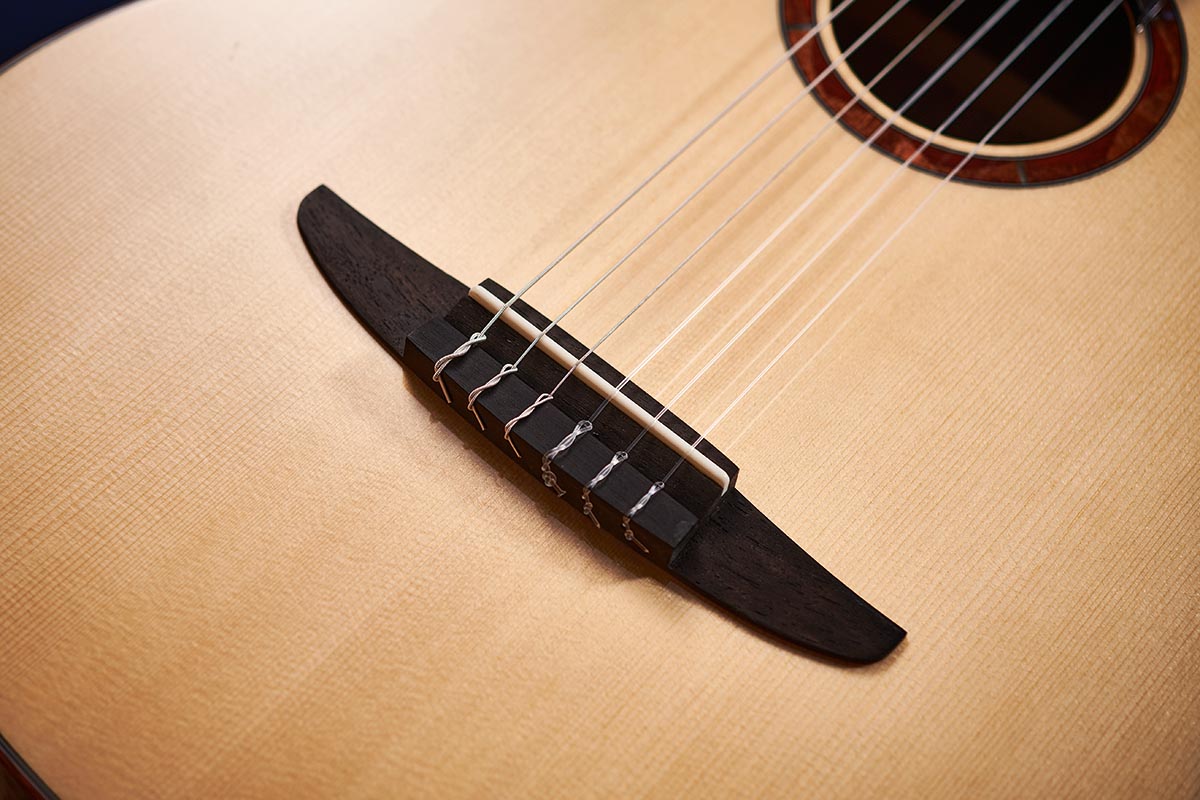
As ever, these small differences look almost irrelevant on paper, but they are very noticeable to your fretting hand. The NTX’s neck, while no skinny Fender style, is considerably different with its 48.3mm width and string spacing of 37mm at the nut with a spread of 53mm at the bridge.
Here, the depth is similar – 21.5mm at the 1st and 23.7mm at the 10th – but the profile is more of a C, and the heel is notably flatter, more steel-string-like. In combination with the 14-fret joint, this means upper-fret playing is easier still. Plus, here we get position markers in the usual spacings from the 3rd to the 17th frets.
Sound-wise, there’s noticeable difference when played unplugged, too, as you’d expect. The NCX’s sense of size comes from a very balanced delivery – thick, strong basses that don’t overshadow or aren’t overshadowed by the trebles.
It actually creates quite an intimate voice, a little more bossa nova than flamenco fire. The downside, however, is that the trebles can sound a little compressed when you hit hard; what you get back seems a little softer, with less snap, unlike a good Spanish-style guitar.
If anything, the NTX has a little more of that snap to its upper-string voicing, although the overall voice is trimmed somewhat in the bass response, giving this one a little more mid-focus. After playing the NCX, it really does seem a little cramped, but after spending time with the NTX then going back to the NCX, that now feels huge!
The point is they have different characters both in their feel and their sound. Let’s plug in. It’s fair to say that the amplified characters mirror the acoustic characters, but the ‘size’ of the NCX now seems greater with considerable lower midrange colour.
On the NTX, that is clearer and the bass is tighter, giving more of the snappy character that this writer is certainly more used to working with. In fact, plugging in our old NCX2000R it sort of sits between the two: a lot clearer in that foggy lower midrange, the low bass a little fuller than the new NTX, and overall a balanced clarity. Both of the new guitars have quite a bit more output, too.
Onboard mics, used sparingly, can add some realism, but they also increase handling noise and you have to watch your volume even more than you would do anyway.
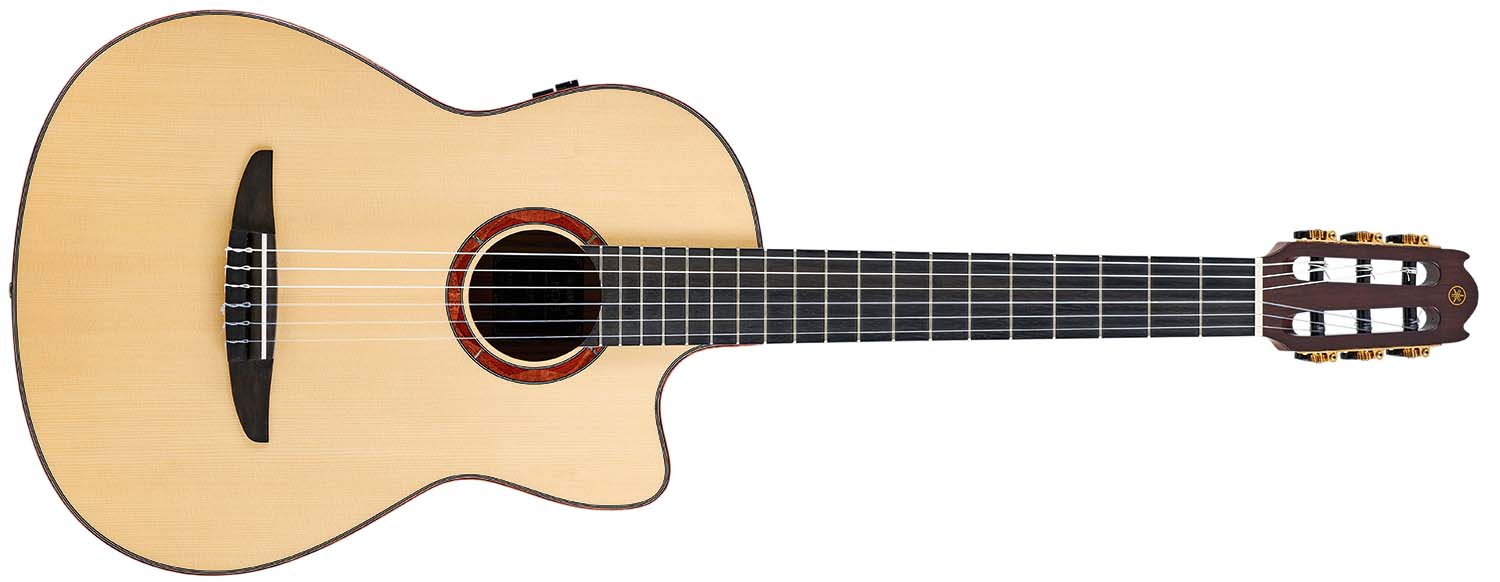
Both guitars come with soundhole bungs if you’re playing above the feedback threshold and, while they dampen the response and volume, they can also save a gig. In truth, though, you have very little in terms of EQ control.
There’s only the ‘treble’ control, which Yamaha tells us is quite complex in what it actually does, but in use seems to really only colour the higher treble frequencies with a centre ‘flat’ notch on the control, and cut and boost either side.
The NX’s original pickup system used two Yamaha-designed contact transducers placed under the bridge on the treble and bass side. They have their own volume controls on the System 61 preamp, more like balance controls really, then we have threeband (bass, mid and treble) EQ sliders and a master volume.
There’s also a tuner, which, oddly, doesn’t mute the guitar’s output but has always proved handy if you’re away from your pedalboard and you’ve left your headstock tuner behind. Real world backup, if you like. Sound aside, the new system is quite a departure, especially in terms of onboard control.
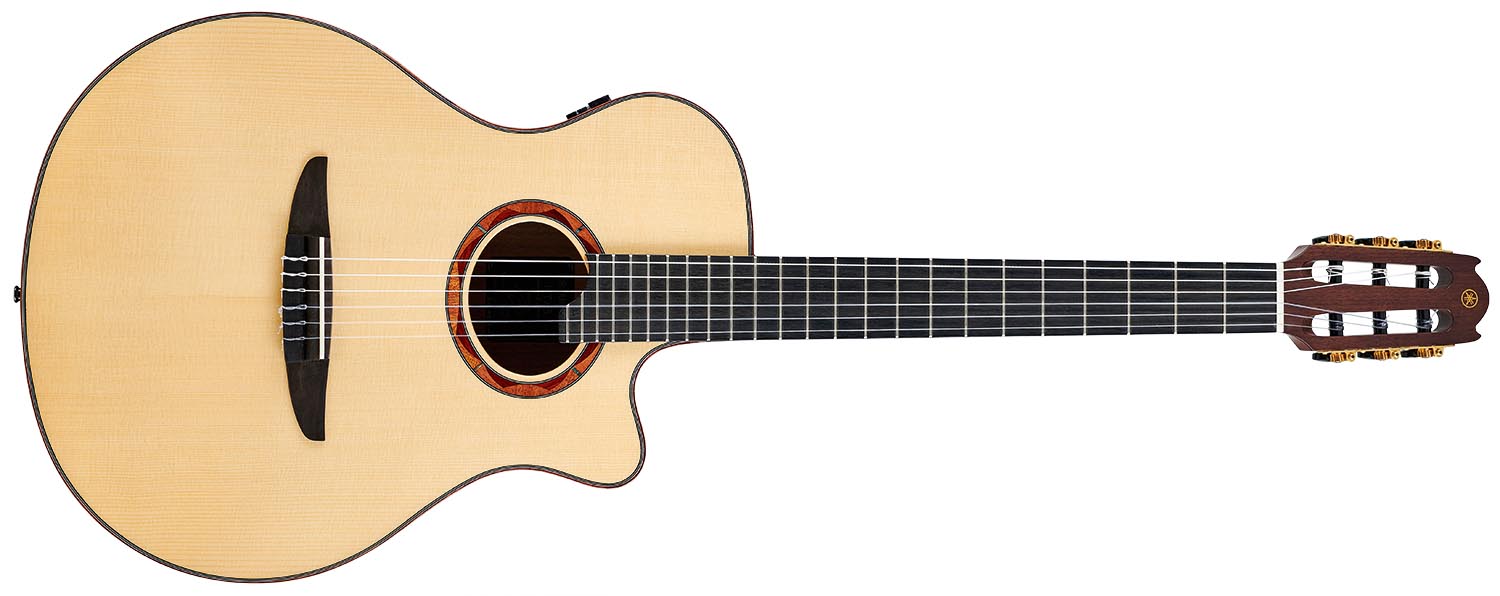
Verdict
Yamaha’s considered approach to guitar design is very evident here. Outwardly, these new guitars look very similar to the original decade-old models, but pretty much every aspect of the design has been tweaked. For the better? Well, it’s doubtful these redesigns will have any less appeal.
The new pickup system with its simplistic control takes away the geekery of the previous preamp, and the three-pickup source of the Atmosfeel system adds to the available voicings, in theory.
The NTX5 ticks all the boxes for that modern ‘crossover’, a nylon-string for steel-string players that is, to our hands, eyes and ears, pretty much state of the art. In isolation, the NCX5 is just as good, but the thicker voicing of our sample does seem to move it further away from its more classical style, and in this writer’s live setup struggled to reproduce the lighter and cleaner voice of our original and well-gigged NCX2000R.
As we say in our introduction, though, your idea of the ‘perfect’ nylon-string sound might be different to ours, not to mention how you want to use it, the style of music you play and your amplification route. What’s not in doubt is that these new NXes throw down another gauntlet: if you’re in the market for an electro nylon-string, this is the place to start your search.
Specs
Yamaha NCX5
- PRICE: $,1889 / £1,786 (inc soft case)
- ORIGIN: Japan
- TYPE: Classical cutaway nylon-string electro with 12-fret neck joint
- TOP: Solid European spruce
- BACK/SIDES: Solid walnut
- MAX RIM DEPTH: 100mm
- MAX BODY WIDTH: 380mm
- NECK: African mahogany
- SCALE LENGTH: 650mm (25.6”)
- TUNERS: Classical style 3-a-side with black rollers, gold-plated with black marble-like buttons
- NUT/WIDTH: Bone/52.3mm
- FINGERBOARD: Ebony, flat, no position markers except side dots at 5th and 7th frets
- FRETS: 19, medium/small
- BRIDGE/SPACING: Stained walnut with ebony topped tieblock/58.5mm
- ELECTRICS: Yamaha Atmosfeel with under-saddle, contact sensor (top) and internal mic. Preamp with master volume, mic blend and treble EQ quick-release battery holder end-jack/strap button
- WEIGHT (kg/lb): 1.99/4.38
- OPTIONS: See NTX5
- RANGE OPTIONS: The all-solid NCX3 (£940) is also available with a cedar top at the same price. The start-up NCX1 with solid Sitka spruce top and more traditional under-saddle pickup (with 3-band EQ and tuner) costs £423; again it’s available with solid cedar top. Back are sides here are laminate and the NCX1FM (£518) uses flame maple as opposed to nato or okume
- LEFT-HANDERS: No
- FINISHES: Natural (as reviewed) – gloss with satin neck and headstock face
Yamaha NTX5
- PRICE: as above
- ORIGIN: Japan
- TYPE: Medium-bodied cutaway, nylon-string electro with 14-fret neck joint
- TOP: Solid European spruce
- BACK/SIDES: Solid walnut
- MAX RIM DEPTH: 90mm
- MAX BODY WIDTH: 380mm
- NECK: African mahogany
- SCALE LENGTH: 650mm (25.6”)
- TUNERS: Classical style 3-a-side with black rollers, gold-plated with black marble-like buttons
- NUT/WIDTH: Bone/48.3mm
- FINGERBOARD: Ebony, 600mm (23.6”) radius, no position markers except side dots at 5th and 7th frets
- FRETS: 22, medium/small
- BRIDGE/SPACING: Stained walnut with ebony topped tie-block/53mm
- ELECTRICS: Yamaha Atmosfeel with under-saddle, contact sensor (top) and internal mic. Preamp with master volume, mic blend and treble EQ quick-release battery holder endjack/strap button
- WEIGHT (kg/lb): 1.86/4.09
- OPTIONS: See NCX5
- RANGE OPTIONS: The NTX3 (in natural or brown sunburst) costs £940; the NTX1 (natural, brown sunburst, black) costs £423, again with different pickup/preamp and laminate back and sides
- LEFT-HANDERS: No
- FINISHES: Natural (as reviewed) – gloss with satin neck and headstock face
- CONTACT: Yamaha

Dave Burrluck is one of the world’s most experienced guitar journalists, who started writing back in the '80s for International Musician and Recording World, co-founded The Guitar Magazine and has been the Gear Reviews Editor of Guitarist magazine for the past two decades. Along the way, Dave has been the sole author of The PRS Guitar Book and The Player's Guide to Guitar Maintenance as well as contributing to numerous other books on the electric guitar. Dave is an active gigging and recording musician and still finds time to make, repair and mod guitars, not least for Guitarist’s The Mod Squad.
“While the odd corner has clearly been cut, these are true Gibsons with all the individuality that this brand exhibits”: Gibson J-45 Special and Hummingbird Special review
“Fender has stripped back the price – but has it gone too far paring back the sounds, too?” Fender Standard Acoustasonic Telecaster review
